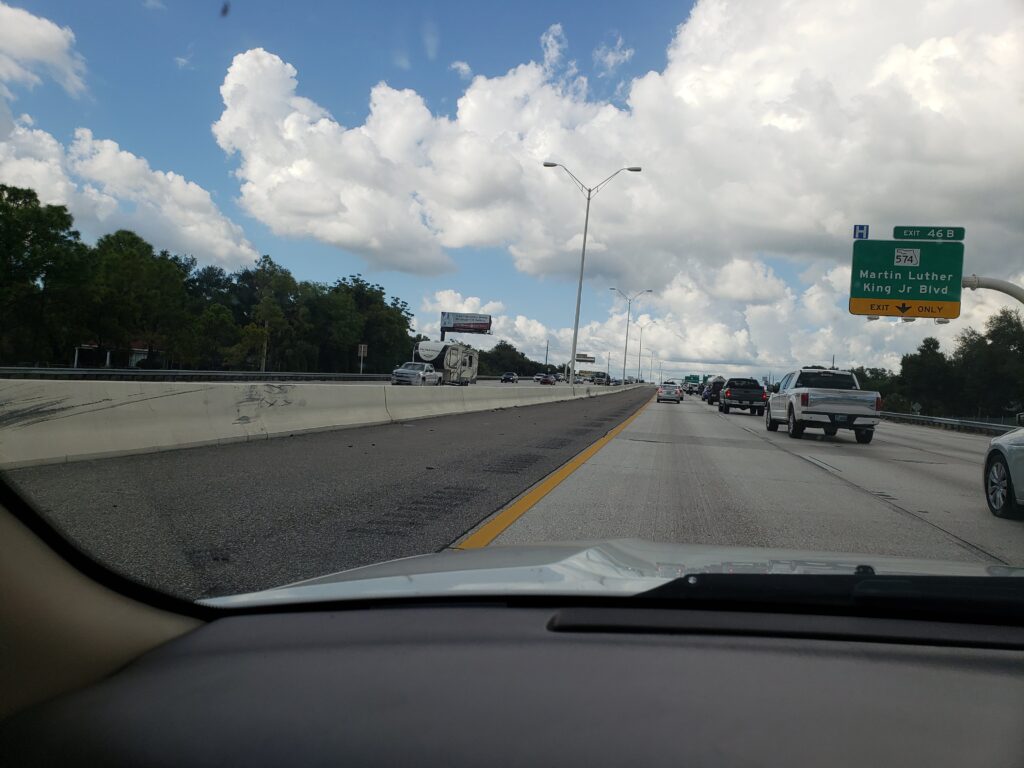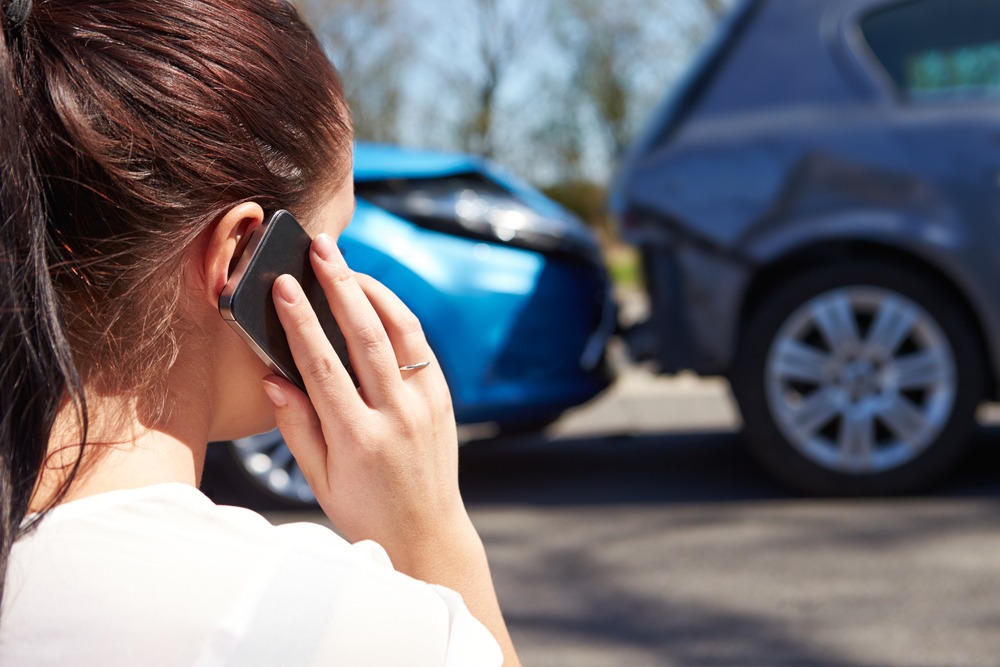I-275 is a convenient and well-used route that provides essential connections to other interstates such as I-75 and I-4, access to hospitals, educational facilities, tourist destinations, and entertainment venues, as well as access to the University of South Florida, the Innovation District, and other important places around the region.
With all these uses, I-275 is frequently congested and the site of many motor vehicle accidents.
Here is a look at what causes accidents on I-275 and what to do if a car accident caused by another driver’s negligence injured you on the interstate.
The Dangers of I-275

Those who commute from St. Petersburg to Tampa are likely aware of the congestion on I-275, as traveling this roadway generally adds 15 minutes a day to a commuter’s journey.
Work zones and accidents often cause traffic congestion. But what causes these accidents? As it turns out, most accidents on I-275 result from human error, otherwise known as negligence.
Some of the most common types of negligence that lead to accidents include:
Speeding
The speed limit on I-275 varies through Tampa, with a 50 mile per hour segment through downtown, a 55 mile per hour limit from Kennedy Boulevard to Busch Boulevard, a 60 mile per hour segment from Busch Boulevard to the Livingston Avenue overpass, and a 70 mile per hour limit from Livingston Avenue to the northern terminus with I-75 in Wesley Chapel. Congestion often requires drivers to slow to speeds far below the posted limit.
Regardless of whether the speed limit is 50 or 75, drivers are required to slow down when the weather and traffic conditions of the roadway require a slower speed. Unfortunately, some drivers do not do this.
As explained by the National Highway Traffic Safety Administration (NHTSA), driving too fast for conditions carries these risks:
- A greater risk of the driver losing control of the vehicle.
- A reduced amount of time the driver has to see obstacles on the roadway—such as the traffic ahead of them slowing down—and to respond by slamming on the brakes.
- An increased amount of time the vehicle will travel after the driver has braked due to the extra work that the vehicle’s braking system has to do to slow the vehicle’s weight down until it is entirely stopped.
- Increased crash severity due to the imposition of more force due to the driver’s excessive speed. The increased crash severity often results in more severe injuries or even death.
The NHTSA notes that speeding is one of the leading causes of motor vehicle accidents on all U.S. roadways and contributes to nearly a third of all traffic fatalities.
Distracted Driving
According to the Florida Department of Highway Safety and Motor Vehicles (FLHSMV), distracted driving caused 56,000 accidents in the state in just a year. This means around 1,000 distracted driving crashes in Florida every week.
While many people take “distracted driving” to mean texting and driving, many issues and activities can result in a driving distraction, including those that:
- Cause the driver to take their hands from the proper position on the steering wheel. Manual distractions include eating, drinking, smoking, or handheld cell phone use.
- Cause the driver to avert their eyes from watching the road. These are known as visual distractions and include activities such as attending to children or pets in the back seat, looking at other vehicles or people on the roadway, inputting an address in a GPS, or even glancing down to retrieve an object on the floor of the vehicle.
- Cause the driver to mentally focus on something other than driving safely. These are known as cognitive distractions and can include daydreaming, thinking about work, or even arguing with someone on the phone.
The reason texting and driving poses such a hazard is because it is simultaneously a manual, visual, and cognitive distraction, as the driver takes their hands from the wheel to input information into their phone, their eyes from the road as they read or respond to a message, and their mind from focusing on driving.
Impaired Driving
FLHSMV reports that more than 400 alcohol-related crashes take place in the Tampa area each year, and dozens more result from drivers impaired by drugs or by both drugs and alcohol. These crashes result in hundreds of injuries and dozens of fatalities.
Alcohol and drugs impact many of the brain’s functions that drivers need to safely operate their vehicles on public roadways, including the ability to track moving objects, maintain a single lane of travel, brake effectively, and control one’s speed. Additionally, drivers entering I-275 while impaired have been known to get on the interstate traveling in the wrong direction, which increases the risk of a particularly dangerous head-on collision.
Failure to Yield the Right-of-Way
While yielding the right-of-way is a term that is most often associated with stopping at a stop sign or a red light, users of I-275 also must yield the right-of-way in many circumstances, including when they are merging onto the interstate, as well as when they are changing lanes. Yielding the right-of-way simply means allowing another vehicle to use the travel lane when legally required.
Failing to yield on other types of roadways often results in a broadside (T-bone) accident. However, failing to yield on I-275 can result in a sideswipe or a rear-end accident. It can even be the catalyst for a chain reaction crash in which a single accident between two vehicles winds up, causing other vehicles to also be involved. Chain reaction crashes are more common on interstates due to higher speed limits and the inability of vehicles approaching the accident to stop in time.
Tailgating
Tailgating refers to a driver following the vehicle in front of them so closely that they will likely be unable to stop in time if the lead vehicle suddenly stops or slows. It is one of the leading causes of one of the most common types of car accidents: a rear-end collision.
According to a report from the Tampa Bay Times, tailgating and other negligent driving behaviors have recently led researchers from the University of South Florida to begin a study through the National Institute for Congestion Reduction and the Center for Urban Transportation Research of the university’s school of engineering.
The study involves participants using a carpooling app known as Ride Flag that can detect the occupancy of the vehicle and using information about the carpool group’s destination to provide high-occupancy vehicle benefits, such as free access to toll lanes. The program is meant to incentivize carpoolers under the belief that less congestion will reduce accidents.
Those interested in participating in the study in Tampa needed only at least one other passenger, a mobile phone, and a travel route that included any part of I-275 between Bearss Avenue and S.R. 60.
Aggressive Driving
Aggressive driving doesn’t refer to a single action but rather a series of bad driving behaviors that drivers typically use to attempt to break through areas of congestion on the roadway. A survey by the AAA Exchange determined that 80 percent of the drivers who responded had expressed significant anger, aggression, or road rage when driving.
The aggressive behaviors the drivers admitted to exhibiting on the road included:
- Switching lanes quickly or closely behind another car, which 26 percent of drivers said they had done.
- Making rude gestures or honking at other drivers, which occurred with around 32 percent of respondents.
- Driven more than 15 mph over the speed limit on the freeway, which was committed by nearly half of the respondents.
- Passed in front of a vehicle at less than a car length, which happened with 22 percent of drivers.
- Sped up when another vehicle attempted to overtake them, which was done by a quarter of respondents in the 30 days before the survey.
- Followed another vehicle too closely to prevent another vehicle from entering the lane, which occurred with 34 percent of drivers.
- Merging into traffic even though another driver has attempted to close the gap between vehicles, which was committed by 28 percent of respondents.
You Were Injured in an Accident on I-275 Caused by Another Driver. What Now?

An accident on the interstate is often an incredibly dangerous and terrifying situation. You’re injured and need an ambulance. You know you’re supposed to obtain information from the other driver and remain on the scene until the police arrive and have had the chance to speak with you. In the chaos of the scene, you may not know what will happen next.
Here are some of the important actions you must take to ensure that your injuries are treated, your initial expenses are covered, and you have the right to seek compensation if the expenses of treating your injuries exceed the limits of your personal injury protection (PIP) policy.
Seek a Prompt and Thorough Medical Evaluation
Even if you don’t feel like the injuries you sustained in the accident are severe enough to require ambulance transport from the scene to the hospital, it is crucial to have a thorough medical examination as soon as possible. Many people do not realize the full extent of their injuries for hours or even days after an accident. Waiting for an evaluation after serious injuries such as traumatic brain injuries or damage to internal organs can kill. With any injury, prompt diagnosis and treatment represent the best opportunity for discovery.
Beyond your physical safety, a medical evaluation is also needed to obtain compensation. As explained by Jacksonville-based East Coast Injury Clinic, Florida’s no-fault insurance rules require all drivers who register their vehicle in the state to purchase a personal injury protection policy that provides at least $10,000 in coverage.
This policy covers a portion of the medical expenses and wage loss associated with the injury up to the policy’s limit. However, to obtain coverage from the policy, you must seek medical treatment within 14 days of your injury.
Those who suffer injuries that satisfy the state’s serious injury threshold or have exceeded their policy limits can file a claim against the at-fault driver’s auto liability insurance policy and even file a car accident lawsuit if the insurance provider fails to compensate the claim adequately. However, to participate in the personal injury claims process, you must have injuries for which you received medical treatment.
Contact an Experienced Tampa Car Accident Attorney
A Tampa car accident attorney provides the understanding and experience with the law and the personal claims process you need to have a successful outcome to your claim.
Your car accident attorney can file a PIP claim and can review your eligibility for a personal injury claim. They can also communicate with the at-fault party’s insurance provider on your behalf and negotiate a settlement that fairly compensates you for the expenses and impacts you incurred as a result of the at-fault party’s negligence.
Your attorney can file your claim within Florida’s two-year statute of limitations and even present your case in court. They can collect the compensation you have recover. The process is too overwhelming to handle alone. With an attorney on your side, you don’t have to.
Schedule A Free Consultation